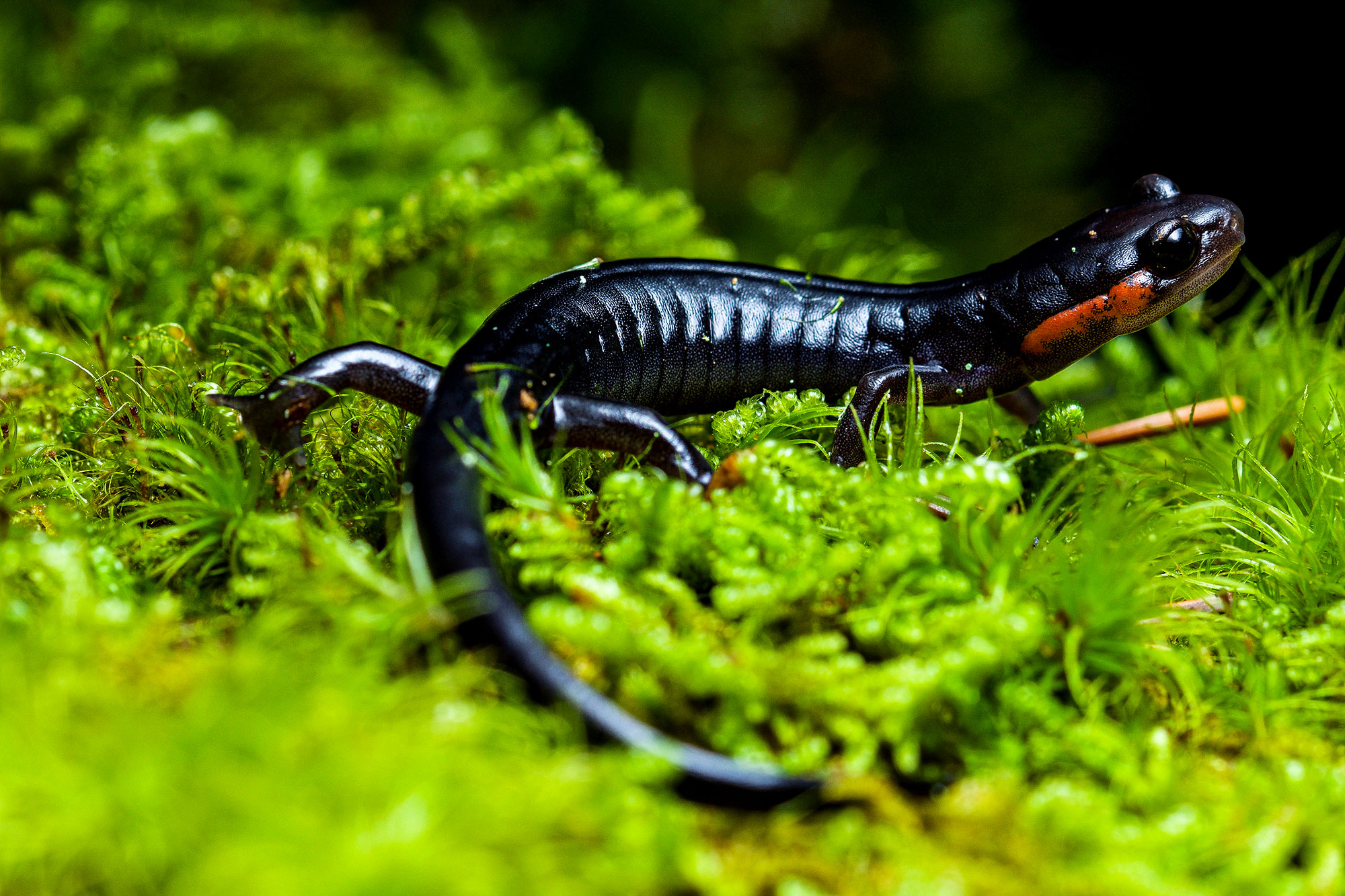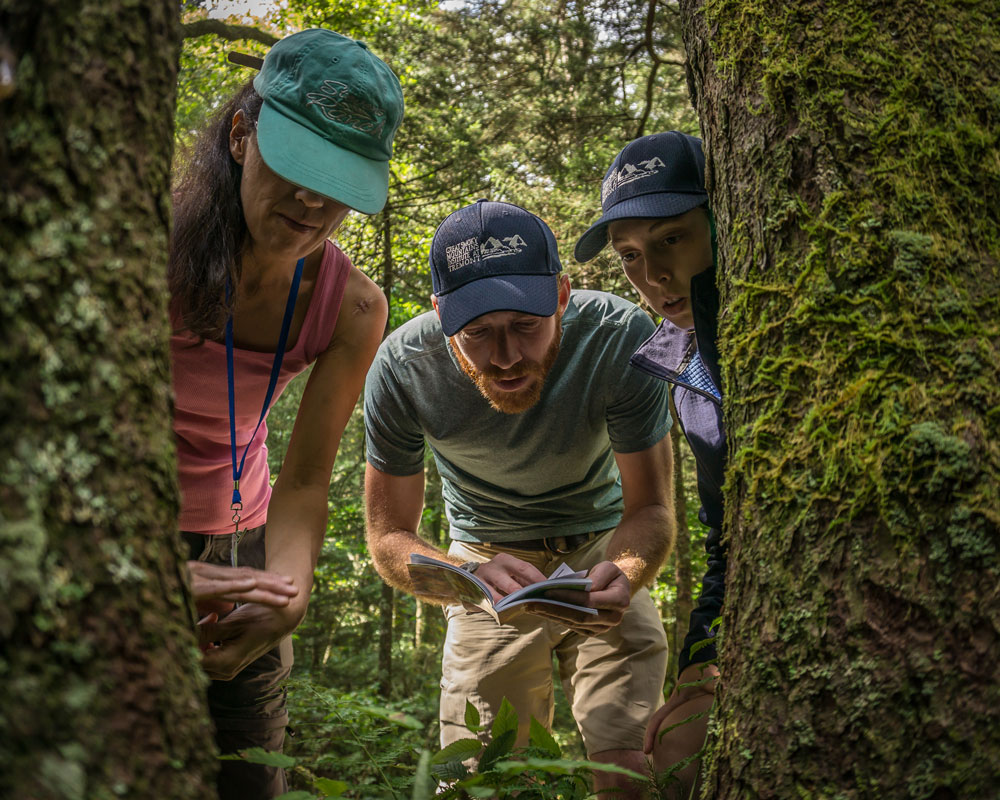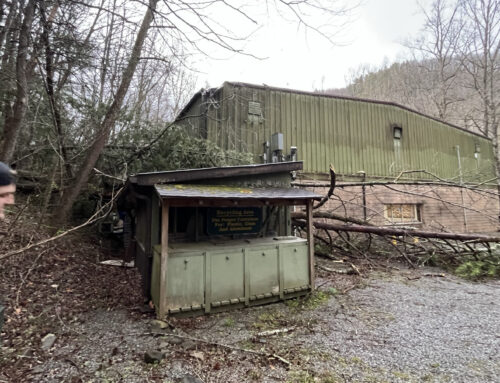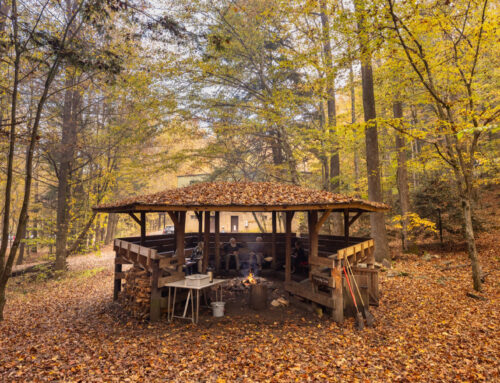Written by Elizabeth Davis, Field Programs Specialist
When I first became aware of biodiversity in the park, it wasn’t through plant identification or guidebooks. It was through smells.
Returning to Walker Valley after a three-week trip to Utah, I stopped on the Tremont bridge, cut off the engine, stepped from the car, and stood in the darkness. I was overwhelmed by sound and smell. After the aridity of Utah, the moisture in the air held so much that was familiar: the clean dampness wafting off the Middle Prong of the Little River, the fog from late afternoon thunderstorms. Every time I return from long trips I make a point to stop on the bridge, to breathe deep.
Elsewhere in the park, I smelled dry ridges before I saw them: the dank musk of galax balanced by the sweet scent of table mountain pine, wind, dust in my throat, and empty water bottles all wrapped into my understanding of pine-oak forests. Similarly, I quickly learned to love the spruce-fir forest for its sweet sharpness, the quickening at the cool breeze, the ache of muscles after climbing Mt. LeConte, and the rich scent around the jagged rock outcrops.
Naturalists specialize in synthesizing observations, experiences, and ideas into coherent stories, stories that help us understand and situate ourselves in the world.
You can’t learn this in books, the feel of a place. One of my coworkers describes it as a “creaturely” sense of the woods. In college, a professor taught me to recognize species not just by their adipose fins or flight feather molt patterns, but also for their “gestalt,” a German word for the shape of something, the essence of the sum of its parts. I think this understanding is crucial for human survival.
 Later, I learned that the spruce-fir ecosystems are rare “sky islands” containing many endemic species found nowhere else. I began to name those species and Frasier fir, Rugel’s ragwort, Jordan’s Red-cheeked Salamanders, and Anakeesta rock formations all became familiar friends. I learned the principles of ecosystem dynamics: how to apply an understanding of island biogeography to island-like ecological communities; how landscape connectivity matters for large mammals; how big predators, like mountain lions, can have trickle-down effects on soil microorganisms; and complicated cause-and-effect, like how a decline in calcium-based snails due to prevailing winds carrying acid deposition from distant coal-fired power plants can affect songbird eggs, or how fire might rage through pine-oak forests, but the open understory created by burning may allow the return of the federally endangered red-cockaded woodpecker to its native range
Later, I learned that the spruce-fir ecosystems are rare “sky islands” containing many endemic species found nowhere else. I began to name those species and Frasier fir, Rugel’s ragwort, Jordan’s Red-cheeked Salamanders, and Anakeesta rock formations all became familiar friends. I learned the principles of ecosystem dynamics: how to apply an understanding of island biogeography to island-like ecological communities; how landscape connectivity matters for large mammals; how big predators, like mountain lions, can have trickle-down effects on soil microorganisms; and complicated cause-and-effect, like how a decline in calcium-based snails due to prevailing winds carrying acid deposition from distant coal-fired power plants can affect songbird eggs, or how fire might rage through pine-oak forests, but the open understory created by burning may allow the return of the federally endangered red-cockaded woodpecker to its native range
Slowly I came to understand that the smells I knew so well represented complicated, delicately balanced systems. I learned that John Muir, naturalist, explorer, and advocate for National Parks, was right when he said, “When we try to pick out anything by itself, we find it hitched to everything else in the Universe.”
At Tremont, we believe that the practice of nature exploration is an antidote to despair and disintegration.
Often our education systems and our culture direct us to pick up one thing by itself and study it in isolation. In short, to specialize. We expect that when we become specialists we will become experts. However, when specialization excludes us from making connections to other disciplines, we experience a lack of rootedness and coherence in our lives: dis-integration.
For many, the world this year has felt like it is shattering apart. In 1977, author, poet, and farmer Wendell Berry wrote that, in a world of increasing specialization, “the community disintegrates because it loses the necessary understandings of forms and enactments of the relations among materials and processes, principles and action, ideals and realities, past and present, present and future, men and women, body and spirit, city and country, civilization and wilderness, growth and decay, life and death.” At Tremont, we believe that the practice of nature exploration is an antidote to despair and disintegration.
 The University of Vermont Field Naturalist Masters program defines naturalists as “specialists in integration;” naturalists, then, specialize in synthesizing observations, experiences, and ideas into coherent stories, stories that help us understand and situate ourselves in the world.
The University of Vermont Field Naturalist Masters program defines naturalists as “specialists in integration;” naturalists, then, specialize in synthesizing observations, experiences, and ideas into coherent stories, stories that help us understand and situate ourselves in the world.
Rediscovering our place in the world is necessary for our health as individuals, our culture, and our wild places. Fortunately for us, the first steps are simple; as Berry said in a recent film, “Things that belong together have been taken apart. And you can’t put it all back together again. What you can do, is the only thing that you can do. You take two things that ought to be together and you put them together.”
Rediscovering our place in the world is necessary for our health as individuals, our culture, and our wild places.
So, go “find two things and put them together.” Put on your puddle-stomping boots and explore your local ditch. See what smells you find; they may lead you to discover much about life upstream. Catch strange looks from the neighbors. Smile and wave. Or better yet, invite them to join you.
Southern Appalachian Naturalist Certification Program (SANCP)
Our Southern Appalachian Naturalist Certification Program provides fundamental and specialty skills in Southern Appalachian ecology and interpretive techniques. Choose from 8 core courses covering subjects such as ecological communities, plant identification, birds, mammals, and more. Learn more »
Photo credits:
View from Clingman’s Dome (featured photo) taken by Steven Johnson, StevenDavidJohnson.com.
Red-cheeked salamander photo taken by Sam Clay, 2019 NANPA High School Scholarship Program participant.
Photo of SANCP students studying ecology in Great Smoky Mountains National Park taken by David Bryant.







